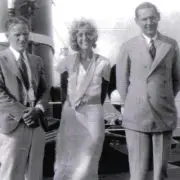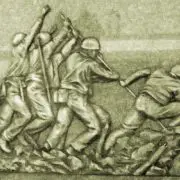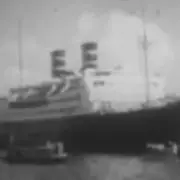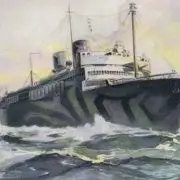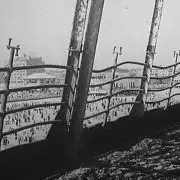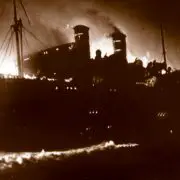Morro Castle, Mohawk and the end of the Ward Line : Part 3
The victim who wasn’t
Mrs. R..A. Sharott of Brooklyn, “the victim who wasn’t” may also have pondered her good fortune over the years following the fire. Although ticketed, and shown on initial passenger listings, Mrs. Sharott did not board the Morro Castle in Havana.. She gave brief interviews to the press in September 1934, stating that she was most definitely still alive and had not been aboard the ship at all: however; she never divulged the reason for her last minute change of plans. Her name ended up on several “final” lists of the missing.
When the Oriente arrived in New York City on September 12, it carried three additional passengers who had missed the departure of the Morro Castle from Havana the previous week. Misses B and D. Werner, and Mr. George Egelhoff, all of Brooklyn, had made the southbound leg of the Morro Castle’s final trip but failed to rejoin her when she set sail for New York. Mrs. Regina Werner, relieved, met her daughters at the Ward Line pier: she had not known for certain until that morning that her girls had not been aboard the Morro Castle. Egelhoff departed for his home in Brooklyn alone, not realizing that his brothers had come to the pier to meet him.
Otto Dunnhaupt, the Morro Castle’s printer sadly awaited the Oriente’s arrival that Wednesday. His stepson, William Fischer, 29, had also been employed aboard the Morro Castle as an assistant steward. William had fallen ill with an undisclosed ailment and was removed to a hospital in Havana. He died there, after the Morro Castle sailed, and was shipped home aboard the Oriente.Joseph Hellinghauser, conductor of the Maenner Gesang Verein Concordia (Concordia Society) and leader of the Rheinpfaelsmer Maennerchoir was another passenger who missed the Morro Castle in Havana. More than one hundred Concordia members made the voyage, and at least 25 died. How Mr. Hellinghauser came to miss the sailing, or when he returned to New York is not known.
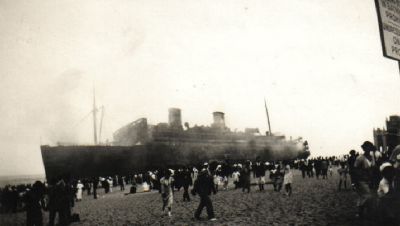
Benjamin Edwards, of Alexandria Virginia, traveled to Sea Girt New Jersey searching for the body of his friend Harry Lipscombe, 54, whom he was sure had been aboard the Morro Castle.
Lipscombe, a conductor on the Southern Railway had been traveling with his coworker, Chief Dispatcher Fred C. Faulconer, 44, also of Alexandria. As employees of an AGWI affiliated railroad they traveled on a pass and therefore did not appear on any of the manifests or published lists. Faulconer was soon found at the morgue at Sea Girt, but of Lipscombe there was not a trace, and there was no immediate evidence that he had been aboard the ship at all.
The story of the missing Mr. Lipscombe faded from the papers after a few days and I’ve found no conclusive article stating that his body was found, or that incontrovertible evidence that he had been aboard the ship surfaced, or that Mr. Lipscombe had not been aboard at all and turned up safe in Alexandria. His name was not included in most of the newspaper lists of the dead or missing, but does appear as a fatality on Gallagher’ s list in Fire at Sea.
Father Raymond Egan, of St. Mary’s Church , White Plains Road, the Bronx, remained at the Morro Castle’s stern for as long as he could. Many survivors, not all of them Catholic, later recalled that he heard confessions and offered general absolution to those crowded into the open deck aft on C Deck. He survived, temporarily smoke blinded, and steadfastly refused to allow himself to be called a hero in his presence. Helen Brodie, 21, of Hartford Connecticut, and her cousin Agnes Berry,26, of Springfield, Massachusetts, were among those who Father Egan comforted that morning. Helen was brought ashore unconscious and upon awakening in the hospital immediately asked “Where is Agnes?” Miss Brodie later spoke briefly, but touchingly, about the disaster. She recalled that she and her cousin “drew strength” from Father Egan, and prayer, before they climbed the rail and jumped for their lives.
“A wonderful thing happened at the stern of that ship. A Catholic priest, I think his name was Father Egan, turned his back to the flames that were driving us overboard, held up his hands and calmly said “Let us pray!” Then he gave us general absolution. The flames came nearer and we jumped.
“The sea was lashed by a gale at the time. The waves were tremendous, but we held each other’s hand, swimming as well as we could. We were buffeted around terribly and Agnes became very weak after several hours. Time passed by slowly. Agnes became hysterical when we saw an airplane fly overhead~ the aviator waved to us and we knew he intended directing rescuers to us.
“Just then an especially high wave swept over us, and I felt Agnes’ hand wretched away. I never saw her after that. Five minutes later a pleasure boat came along and picked me up.
Agnes Berry was lost, and accounts differ as to whether or not her body was recovered.
New Jersey Governor Harry Moore may have been the aviator Miss Brodie and the unfortunate Miss Berry saw from the water. He arrived at the disaster scene soon after sunrise, while hundreds of survivors were still in the water, widely spread between the Morro Castle and shore. He remained on the scene for as long as he safely could, and effected rescue for several survivors by circling them with his plane and dipping his wings towards them until rescue craft moved towards in their direction.


